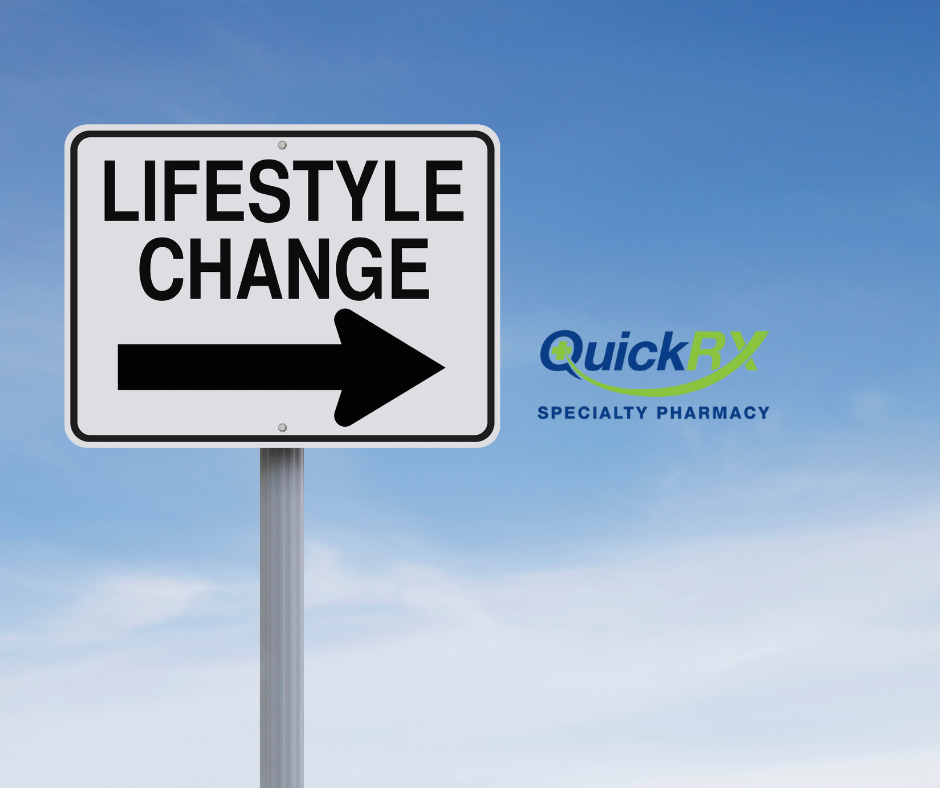Pulmonary arterial hypertension (PAH) is a devastating condition that affects thousands of people worldwide, causing progressive shortness of breath, fatigue, and ultimately heart failure if left untreated. For patients diagnosed with this challenging disease, bosentan for pulmonary hypertension represents a groundbreaking oral treatment option that has fundamentally changed the landscape of PAH management since its FDA approval in 2001.
This comprehensive guide explores everything patients and caregivers need to know about bosentan, from its mechanism of action to practical considerations for daily management, helping you make informed decisions about this important treatment option.
Understanding Pulmonary Arterial Hypertension: The Foundation
What Is Pulmonary Arterial Hypertension?
Pulmonary arterial hypertension is a serious condition characterized by abnormally high blood pressure in the arteries that carry blood from the heart to the lungs. Moreover, according to the Mayo Clinic, when the smaller blood vessels in the lungs become more resistant to blood flow, the right ventricle must work harder to pump enough blood through the lungs.
The Impact of PAH on Daily Life
Additionally, PAH affects almost four times as many women as men in the United States, and its symptoms can be debilitating. Patients typically experience:
- Progressive shortness of breath, especially during physical activity
- Extreme fatigue that limits daily activities
- Chest pain and pressure
- Dizziness or fainting episodes
- Swelling in ankles, legs, and abdomen
Unfortunately, the condition is often misdiagnosed initially because its symptoms mimic those of other heart and lung conditions, leading to delays in proper treatment that can be life-threatening.
What Is Bosentan (Tracleer)?
The First Oral ERA Treatment
Bosentan belongs to a class of medications called endothelin receptor antagonists (ERAs). As the first FDA-approved oral medication for PAH, Tracleer represented a revolutionary advancement in treatment options. Prior to its availability, patients with PAH were primarily limited to intravenous medications like epoprostenol, which required continuous infusion through a central line.
How Bosentan Works
Furthermore, the medication works by targeting a specific biological pathway that contributes to PAH progression. According to research published in the New England Journal of Medicine, endothelin-1 is a potent vasoconstrictor and smooth-muscle mitogen that plays a crucial role in PAH development.
The Endothelin Pathway in PAH
In healthy individuals, endothelin helps regulate blood vessel function. However, in PAH patients, excessive endothelin production causes:
- Constriction of pulmonary blood vessels
- Abnormal growth of smooth muscle cells in vessel walls
- Increased pulmonary vascular resistance
- Progressive narrowing of airways
Therefor, Bosentan blocks both ETA and ETB endothelin receptors, preventing these harmful effects and allowing blood vessels in the lungs to relax and widen.
Clinical Evidence: Proven Benefits in PAH Management

Clinical Evidence in Action – Real patients experiencing improved quality of life with bosentan therapy for pulmonary hypertension.
Landmark Clinical Trials
Moreover, the efficacy of bosentan has been demonstrated through multiple rigorous clinical studies. The pivotal trial published in the New England Journal of Medicine showed remarkable results:
Exercise Capacity Improvements
In the landmark study involving 213 patients with PAH, those treated with bosentan experienced:
- 44-meter improvement in six-minute walk distance compared to placebo
- Significant enhancement in exercise tolerance
- Improved functional capacity for daily activities
Secondary Benefits
Beyond exercise improvement, patients also demonstrated:
- Better WHO functional class ratings
- Reduced Borg dyspnea scores (less shortness of breath)
- Delayed time to clinical worsening
- Improved quality of life measures
Real-World Effectiveness
Although clinical trials represent controlled environments, but real-world data from the Pulmonary Hypertension Association confirms that bosentan continues to provide meaningful benefits in everyday clinical practice, with many patients experiencing sustained improvements in symptoms and functional capacity.
Available Formulations and Dosing
Tablet Options
Bosentan is available in multiple formulations to accommodate different patient needs:
Film-Coated Tablets
- 62.5 mg tablets (typically used for initial dosing)
- 125 mg tablets (standard maintenance dose)
Dispersible Tablets for Oral Suspension
- 32 mg tablets that can be dissolved in water
- Particularly useful for pediatric patients or those with swallowing difficulties
- Tablets can be broken in half along score lines but should not be divided into quarters
Dosing Guidelines
Adult Dosing
The standard dosing regimen for adults typically follows this pattern:
Initial Phase (Weeks 1-4):
- 62.5 mg twice daily (morning and evening)
- Allows the body to adjust to the medication
- Helps minimize potential side effects
Maintenance Phase (Week 5 and beyond):
- 125 mg twice daily for most patients
- Some patients may require 250 mg twice daily based on response and tolerance
- Dosing should be consistent, taken at approximately the same times each day
Pediatric Considerations
For children 3 years and older, dosing is typically weight-based and calculated by healthcare providers. The dispersible tablets make administration easier for younger patients who may have difficulty swallowing standard tablets.
Administration Guidelines
- Can be taken with or without food
- Should be taken at consistent times daily
- If using dispersible tablets, dissolve in a small amount of water immediately before administration
- Half tablets can be stored in opened blister packaging for up to 7 days
The Tracleer REMS Program: Ensuring Safe Use

Safety First – The Tracleer REMS program ensures proper monitoring and safe use for PAH patients.
Understanding REMS Requirements
Due to serious potential risks, particularly liver toxicity and birth defects, bosentan is only available through a restricted distribution program called the Tracleer Risk Evaluation and Mitigation Strategy (REMS).
Key REMS Components
Patient Enrollment:
- All patients must be enrolled in the program before receiving medication
- Comprehensive education about risks and benefits
- Signed consent acknowledging understanding of requirements
Healthcare Provider Certification:
- Prescribers must be certified through the REMS program
- Regular training updates on safety protocols
- Specific documentation requirements for prescribing
Pharmacy Requirements:
- Only REMS-certified pharmacies can dispense bosentan
- Pharmacists must verify patient enrollment and testing compliance
- Prior authorization confirmation required for each dispensing
Get Inmediate Copay Assistance
Monthly Monitoring Requirements
Liver Function Testing
The most critical safety requirement involves regular liver monitoring:
- Pre-treatment: Liver function tests required before starting therapy
- Monthly monitoring: ALT, AST, and bilirubin levels checked every 30 days
- Ongoing assessment: Continued monitoring throughout treatment duration
Research published in PMC examining REMS adherence found that while the program has improved safety monitoring, compliance with monthly testing requirements varies, emphasizing the importance of patient and provider vigilance.
Pregnancy Testing and Prevention
For all females of reproductive potential:
- Pre-treatment pregnancy test: Required before initiating therapy
- Monthly pregnancy testing: Mandatory throughout treatment
- Post-treatment testing: Required for one month after discontinuation
- Contraception requirements: Reliable birth control essential, as hormonal contraceptives may be less effective
Comprehensive Side Effect Profile
Common Side Effects
Managing Common Side Effects
Frequently Reported (>10% of patients)
Headache (22% of patients):
- Often occurs during initial treatment period
- May decrease as body adjusts to medication
- Can often be managed with over-the-counter pain relievers
Liver Function Abnormalities:
- Elevated liver enzymes in approximately 8-10% of patients
- Usually reversible with dose reduction or discontinuation
- Requires immediate medical attention if accompanied by symptoms
Moderately Common Side Effects (1-10% of patients)
- Flushing (9%): Temporary redness and warmth, particularly in face and neck
- Syncope (7%): Fainting episodes, especially when standing quickly
- Anemia: Decreased red blood cell count, monitored through regular blood tests
- Fluid retention: Swelling in ankles, feet, or legs
Serious Side Effects Requiring Immediate Medical Attention
Liver Injury Warning Signs
According to Cleveland Clinic, patients should contact their healthcare provider immediately if experiencing:
- Right upper abdominal pain
- Loss of appetite or nausea
- Light-colored stools
- Dark yellow or brown urine
- Yellowing of skin or eyes (jaundice)
- Unusual fatigue or weakness
Fluid Retention Complications
- Rapid weight gain (more than 2-3 pounds in a few days)
- Increasing shortness of breath
- Swelling that worsens or doesn’t improve
- New or worsening leg or ankle swelling
Pulmonary Edema
Although rare, patients should be aware of signs including:
- Severe shortness of breath
- Pink, frothy sputum when coughing
- Chest pain
- Blue lips or fingernails
Managing Side Effects
Headache Management
- Start with over-the-counter pain relievers as recommended by healthcare provider
- Ensure adequate hydration
- Consider timing of doses if headaches are severe
- Most patients experience improvement over time
Fluid Retention Strategies
- Monitor daily weight and report significant changes
- Follow sodium-restricted diet if recommended
- Elevate legs when sitting or lying down
- Diuretic therapy may be necessary in some cases
Anemia Monitoring
- Regular complete blood counts every three months
- Iron supplementation may be recommended
- Blood transfusion rarely necessary
- Usually improves with continued treatment
Drug Interactions and Contraindications

Medication Management – Understanding bosentan interactions is crucial for safe PAH treatment
Absolute Contraindications
Medications That Cannot Be Used with Bosentan
Glyburide (Glibenclamide):
- Significantly increases risk of liver toxicity
- Alternative diabetes medications should be used
Cyclosporine:
- Markedly increases bosentan blood levels
- Can lead to dangerous accumulation of the drug
Medical Conditions Precluding Use
- Moderate to severe liver disease: Pre-existing liver problems increase risk of serious complications
- Pregnancy: Confirmed teratogenic effects in animal studies
- Hypersensitivity: Known allergy to bosentan or any component
Significant Drug Interactions
Medications Affected by Bosentan
Bosentan induces certain liver enzymes, potentially reducing the effectiveness of:
- Hormonal contraceptives: Birth control pills may be less effective
- HIV protease inhibitors: Reduced antiviral effectiveness
- Certain antibiotics: Altered metabolism of some antimicrobials
- Other medications: Various drugs metabolized by CYP450 enzymes
Medications That Affect Bosentan
- HIV protease inhibitors: May increase bosentan levels
- Antifungal medications: Potential for increased bosentan concentrations
- Certain antibiotics: May alter bosentan metabolism
Special Populations
Elderly Patients
Older adults may be at increased risk for:
- Age-related liver, kidney, or heart problems
- Increased sensitivity to fluid retention
- Greater susceptibility to drug interactions
- Need for more frequent monitoring
Pediatric Use
Bosentan is approved for children 3 years and older, with special considerations:
- Weight-based dosing calculations
- Use of dispersible tablets for easier administration
- Monitoring for early signs of puberty in female patients
- Family education about REMS requirements
Insurance Coverage and Access
Understanding Coverage Challenges
Coverage Complexity Factors
Most prescription insurance plans cover bosentan, but coverage can be complex due to:
- High medication costs (brand name pricing)
- Prior authorization requirements
- Step therapy protocols requiring trial of other medications first
- Specialty pharmacy requirements
Navigating Prior Authorization
Documentation Requirements
Insurance companies typically require:
- Confirmed PAH diagnosis with specific diagnostic criteria
- Documentation of functional class (WHO Class II-IV)
- Previous treatment history and responses
- Baseline testing results (liver function, pregnancy testing)
Working with Healthcare Providers
- Ensure complete medical records are submitted
- Include six-minute walk test results when available
- Document failed previous therapies if applicable
- Provide detailed symptom and functional impact descriptions
Patient Assistance Options
Manufacturer Support Programs
While specific copay assistance programs may vary, patients should explore:
- Patient assistance programs offered by pharmaceutical companies
- Income-based eligibility for reduced-cost medications
- Free medication programs for qualifying patients
Non-Profit Organizations
Several organizations provide support for PAH patients:
- Pulmonary Hypertension Association: Resources and advocacy
- Patient Access Network Foundation: Potential copay assistance
- HealthWell Foundation: Financial assistance for eligible patients
Generic Alternatives
Generic versions of bosentan have become available, potentially offering:
- Significantly reduced costs
- Equivalent efficacy and safety profile
- Easier insurance approval in some cases
Monitoring and Follow-up Care

Regular Monitoring – Monthly liver function tests ensure safe long-term therapy
Regular Monitoring Schedule
Initial Phase (First 6 Months)
Monthly appointments including:
- Liver function tests (ALT, AST, bilirubin)
- Complete blood count for anemia monitoring
- Blood pressure and heart rate assessment
- Weight monitoring for fluid retention
- Symptom assessment and functional evaluation
Pregnancy testing (females of reproductive potential):
- Monthly testing throughout treatment
- Contraception counseling and verification
- Education about risks and pregnancy prevention
Need Bosetan Copay Assistance?
Maintenance Phase (After 6 Months)
Quarterly monitoring:
- Liver function tests every 3 months (some patients may need monthly)
- Complete blood count every 3 months
- Comprehensive clinical assessment
Annual evaluations:
- Six-minute walk test to assess functional capacity
- Echocardiogram to evaluate heart function
- Comprehensive medication review
- Quality of life assessment
What to Monitor at Home
Daily Observations
Weight monitoring:
- Check weight at the same time each day
- Report gains of 2-3 pounds over 2-3 days
- Use same scale and conditions consistently
Symptom tracking:
- Note changes in shortness of breath
- Monitor exercise tolerance
- Track energy levels and fatigue
- Document any new or worsening symptoms
When to Contact Healthcare Provider
Immediate contact required for:
- Signs of liver problems (yellowing skin/eyes, dark urine, light stools)
- Rapid weight gain or new swelling
- Worsening shortness of breath
- Chest pain or palpitations
- Signs of pregnancy
Living with PAH: Optimizing Treatment Success

Complete Care Approach – Combining bosentan therapy with lifestyle modifications for optimal PAH management
Lifestyle Modifications
Exercise and Activity
While PAH limits exercise capacity, maintaining appropriate activity levels is important:
- Work with healthcare providers to develop safe exercise plans
- Start slowly and gradually increase activity as tolerated
- Avoid overexertion that causes severe shortness of breath
- Consider pulmonary rehabilitation programs specifically designed for PAH patients
Dietary Considerations
Sodium restriction:
- Limit sodium intake to reduce fluid retention
- Read food labels carefully
- Avoid processed and restaurant foods when possible
- Use herbs and spices instead of salt for flavoring
Fluid management:
- Some patients may need fluid restrictions
- Monitor daily fluid intake if recommended
- Balance hydration needs with fluid retention concerns
Travel Considerations
Planning for Travel
Medication management:
- Ensure adequate supply for entire trip plus extra
- Carry medications in original containers
- Keep prescriptions in carry-on luggage
- Consider time zone adjustments for dosing
Altitude considerations:
- High altitudes may worsen PAH symptoms
- Discuss travel plans with healthcare provider
- Consider supplemental oxygen for air travel if recommended
Emergency Preparedness
- Carry emergency contact information
- Have medical summary and medication list available
- Know location of nearest appropriate medical facilities
- Consider medical alert identification
Family and Caregiver Support
Education and Involvement
Family education about:
- Recognizing warning signs and symptoms
- Understanding medication requirements
- Supporting treatment adherence
- Emergency response planning
Caregiver support:
- Connect with PAH support groups
- Utilize online resources and communities
- Consider counseling or therapy if needed
- Maintain caregiver health and wellbeing
The Future of PAH Treatment
Combination Therapy Approaches
Modern PAH treatment increasingly involves combination therapy, with bosentan often used alongside:
- Phosphodiesterase-5 inhibitors (sildenafil, tadalafil)
- Prostacyclin pathway medications (epoprostenol, treprostinil)
- Soluble guanylate cyclase stimulators (riociguat)
Emerging Research
Ongoing research continues to refine PAH treatment, including:
- Novel combination strategies
- Improved dosing protocols
- Enhanced safety monitoring
- Next-generation ERAs with improved side effect profiles
Treatment Goals and Outcomes
The ultimate goals of bosentan therapy include:
Short-term objectives:
- Improved exercise capacity and functional class
- Reduced symptoms and better quality of life
- Delayed disease progression
- Avoided hospitalizations
Long-term objectives:
- Prolonged survival
- Maintained functional independence
- Sustained quality of life improvements
- Prevention of right heart failure
Conclusion: The Medication That Changed Everything
The story of how bosentan for pulmonary hypertension transformed PAH treatment forever is more than medical history; it’s a testament to the power of targeted research, innovative thinking, and the relentless pursuit of better patient outcomes. When the FDA first approved this oral ERA medication in 2001, few could have predicted the complete transformation it would bring to PAH care.
Before bosentan, PAH patients faced a stark reality: complex intravenous treatments, limited options, and poor prognoses. After bosentan, the entire landscape changed. Patients gained access to oral therapy that not only improved exercise capacity and quality of life but also demonstrated the possibility of targeting specific disease pathways; opening doors to an entire new era of PAH therapeutics.
The impact extends far beyond individual patient outcomes. Bosentan’s success validated the endothelin pathway as a therapeutic target, catalyzed pharmaceutical investment in PAH research, established the foundation for modern combination therapies, and fundamentally changed how the medical community approaches this devastating disease.
Today, as we benefit from multiple PAH treatment options and significantly improved patient outcomes, it’s important to remember that this progress stands on the foundation laid by bosentan. The medication didn’t just treat PAH, it transformed our understanding of what was possible, proving that with the right approach, even the most challenging diseases could be not just managed, but conquered.
For patients living with PAH today, bosentan represents more than a treatment option; it embodies the hope that drove its development and the proof that medical breakthroughs can truly transform lives. As research continues to build upon this foundation with newer therapies and combination approaches, the legacy of how bosentan for pulmonary hypertension changed everything continues to benefit patients worldwide.
The transformation of PAH treatment through bosentan serves as a powerful reminder that in medicine, as in life, revolutionary change is possible. What once seemed impossible; effective oral treatment for PAH; became reality through dedication, research, and the unwavering belief that patients deserved better. That transformation continues today, as each new patient who benefits from modern PAH therapy stands as living proof of how one breakthrough medication can change the course of medical history forever.
Continuing the Legacy: Modern Access to Life-Changing Treatment
While bosentan revolutionized PAH treatment possibilities, accessing these life-changing medications shouldn’t be a struggle. At QuickRx, we understand that the breakthrough represented by bosentan for pulmonary hypertension means nothing if patients can’t afford or access their prescribed therapy. Our specialty pharmacy services are designed to help PAH patients navigate the complex world of insurance approvals, prior authorizations, and medication access; ensuring that the revolutionary treatment advances pioneered by bosentan reach every patient who needs them.
Just as bosentan transformed what was possible in PAH care, QuickRx is transforming how patients access their medications, providing personalized support, insurance advocacy, and comprehensive care coordination. Because breakthrough treatments like bosentan deserve breakthrough access solutions that put patients first.


